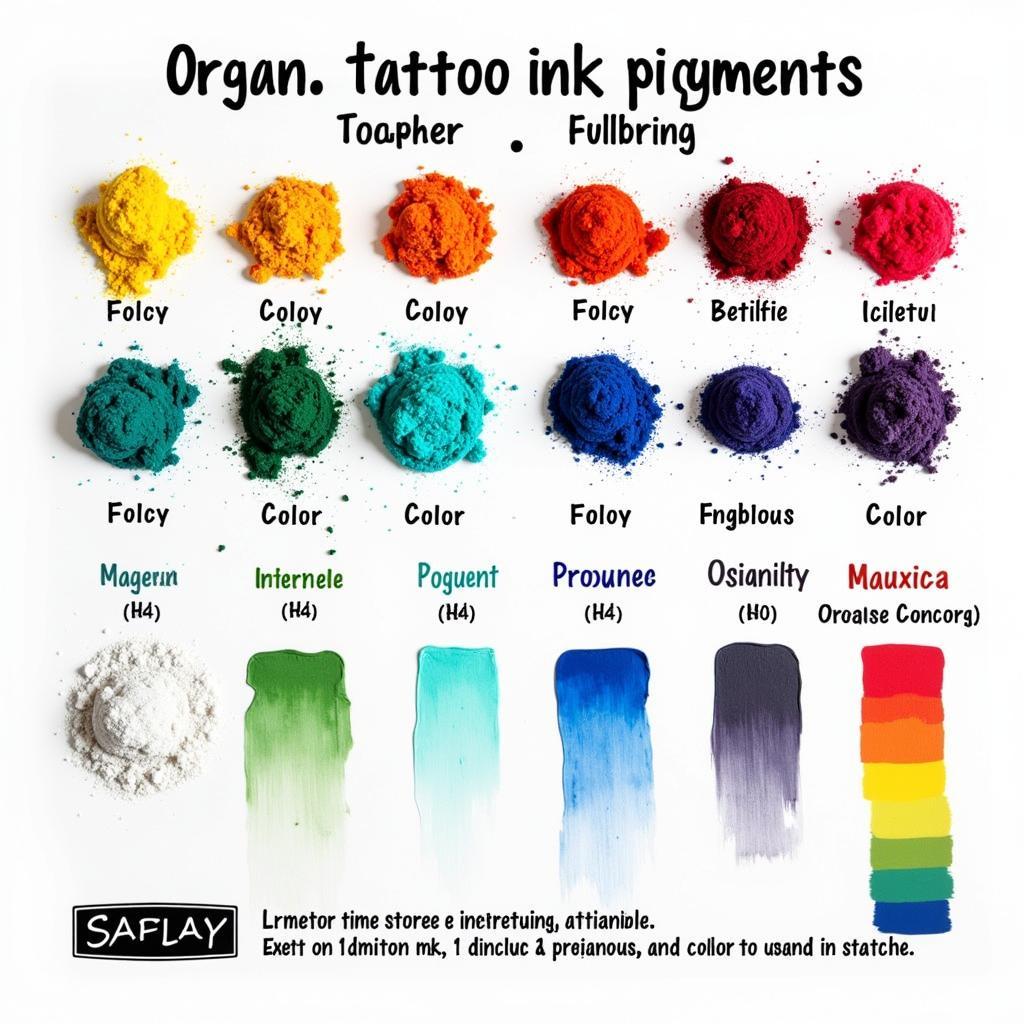Can you mix tattoo ink colors? Absolutely! Mixing tattoo inks is a common practice among tattoo artists to achieve unique shades and custom color palettes. However, it’s not as simple as grabbing any two colors and swirling them together. There’s a science to it, and understanding the principles behind color mixing is crucial for achieving vibrant and long-lasting tattoo results. Learn the ins and outs of mixing tattoo inks, and discover how to create the perfect hues for your next piece of body art. how to color a tattoo helps explain the process.
Understanding Tattoo Ink Properties
Before diving into the mixing process, it’s essential to understand the properties of tattoo ink. Tattoo inks are typically pigment-based, meaning they consist of tiny particles of color suspended in a carrier solution. This carrier solution not only helps the pigment flow smoothly through the tattoo machine but also aids in its implantation into the skin. The quality and composition of both the pigment and the carrier solution can significantly impact the final color and longevity of your tattoo.
Pigment Properties
Pigments are categorized into organic and inorganic. Organic pigments are carbon-based and generally produce brighter, more vibrant colors. However, they may be less lightfast than inorganic pigments, meaning they can fade over time with sun exposure. Inorganic pigments, derived from minerals and metals, are generally more lightfast and offer a wider range of opaque colors.
 Tattoo Ink Pigment Properties
Tattoo Ink Pigment Properties
The Art of Mixing Tattoo Inks
Mixing tattoo inks involves combining different pigments to create new hues. While the concept is simple, the execution requires precision and understanding of color theory.
Primary, Secondary, and Tertiary Colors
Just like in painting, the primary colors in tattoo inks are red, yellow, and blue. Mixing these primary colors in equal proportions creates the secondary colors: orange, green, and purple. do colored tattoos cost more provides more details on the costs of using different ink colors. Combining a primary color with its adjacent secondary color yields tertiary colors, such as red-violet or blue-green.
Color Mixing Techniques
Start with small amounts of ink when mixing. It’s easier to add more color than to take it away. Use a clean mixing surface and sterile mixing tools to prevent contamination. Thoroughly mix the inks until a consistent color is achieved.
“Always test your mixed ink on a practice skin or a less visible area before applying it to the main tattoo,” advises renowned tattoo artist, Amelia Stone. “This allows you to see how the color will heal and interact with the skin.”
Advanced Mixing Techniques and Considerations
Beyond basic color mixing, there are advanced techniques that experienced tattoo artists employ to achieve specific effects.
Creating Tints, Shades, and Tones
Adding white ink to a color creates a tint, making it lighter and more pastel. Black ink creates a shade, darkening the color. Mixing a color with both black and white creates a tone, which alters both the color’s value and saturation. what colors do red and purple make explains this further.
Mixing Brands and Opacity
Mixing inks from different brands is generally discouraged due to potential inconsistencies in pigment and carrier solutions. Also, consider the opacity of each ink. Mixing opaque and transparent inks can affect the final color’s vibrancy and coverage. how to color a tattoo for beginners offers more tips.
“Understanding the undertones of your inks is crucial for achieving realistic skin tones,” adds Ms. Stone. “Knowing which colors to mix for specific undertones can make all the difference in creating a lifelike portrait.”
Conclusion
Can you mix tattoo ink colors? Yes, but doing it effectively requires knowledge, practice, and an understanding of color theory. By following these guidelines and exercising caution, you can expand your color palette and create truly unique and captivating tattoo art. what colors to mix for skin tone helps with creating realistic skin tones. Remember, mixing tattoo inks is a skill honed over time, so patience and persistence are key.
FAQ
- What is the best way to mix tattoo inks?
- Can I mix organic and inorganic pigments?
- How do I achieve a specific skin tone when mixing inks?
- What are the common mistakes to avoid when mixing tattoo inks?
- How can I ensure the longevity of mixed tattoo ink colors?
- Where can I find high-quality tattoo inks for mixing?
- What safety precautions should I take when mixing tattoo inks?
Need help? Contact us at Phone: 0373298888, Email: [email protected] or visit us at 86 Cầu Giấy, Hà Nội. We have a 24/7 customer service team.
